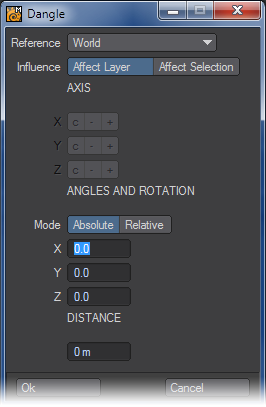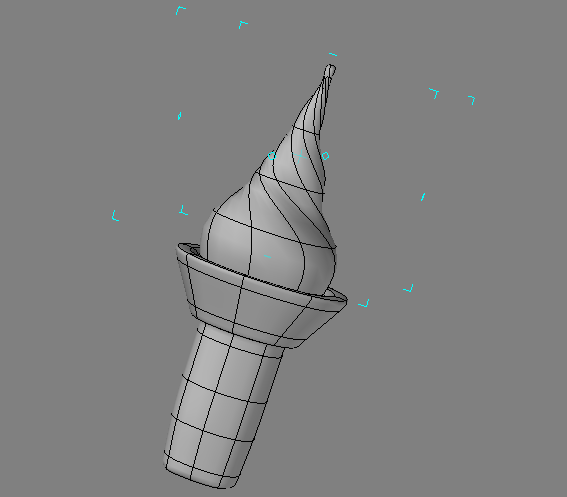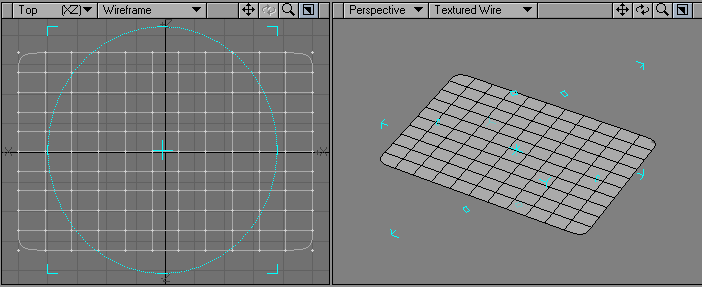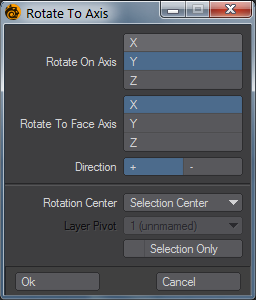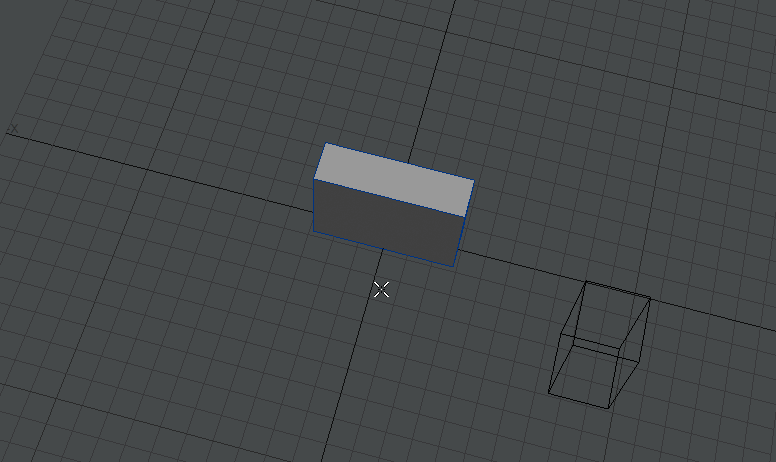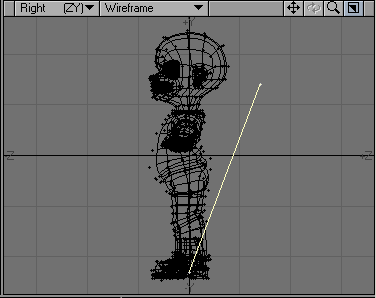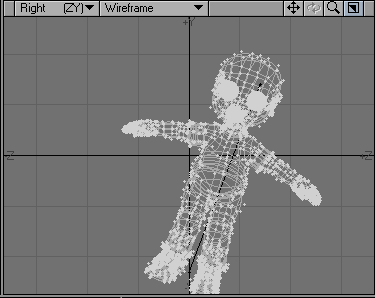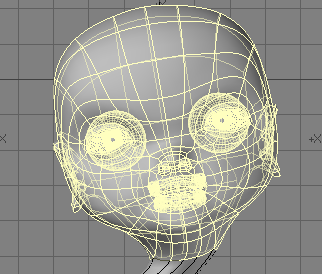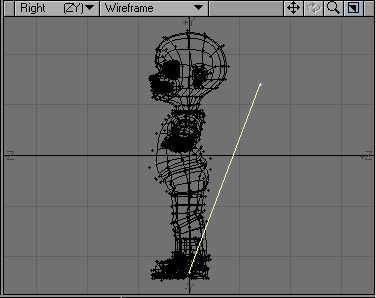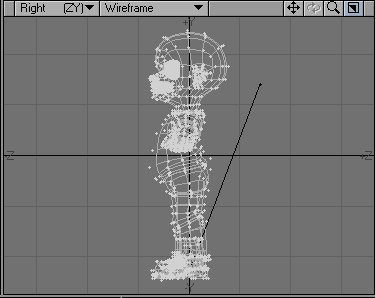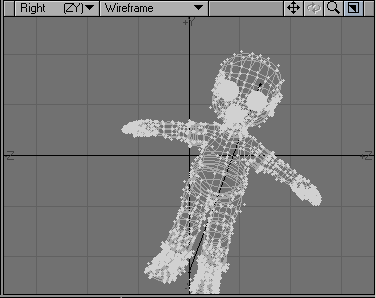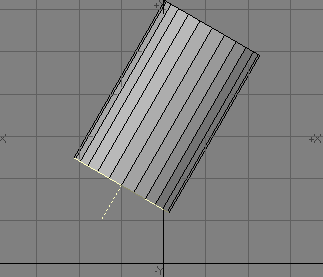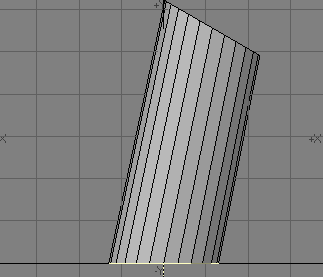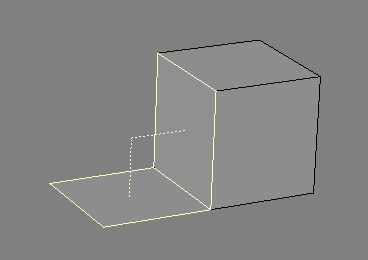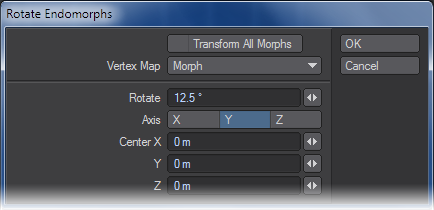Rotate - More
This group contain tools that are no longer so required, but could still prove useful in the right circumstances.
Dangle
Dangle will rotate a layer or selection relative to a rotation center. The Reference is what determines the axes used for rotation. Selection is a bounding box around the selected geometry, World is the Origin, and B.G. Layer is a bounding box around the background layer geometry.
If Influence is set to Affect Layer, the rotation is applied to all of the geometry in the layer. With Affect Selection, only the selected geometry is rotated. Note that the rotation center can still be based on the Selection, even if you are using Affect Layer.
When the c setting is used for Axis, the rotation center is at the center of the Reference. Use the - or + options to move the rotation center to the negative or positive side of the bounding area, along the axis - these obviously have no effect if World is used.
When the bounding area is computed, an angle for the top “polygon” is measured based on its normal. If you use Absolute mode, it will change the rotation angle to be the exact amount entered. Relative will add the rotation to the geometry.
Enter the desired rotational values in the XYZ fields. These relate to the axis around which the rotation is performed.
To use the Distance function, select two points prior to running Dangle. The distance between those two points will be shown in the Distance field. Enter a new value and set Influence to Affect Selection. Click Ok. The two points will now be apart by the entered distance. Essentially, the points are scaled, using the rotation center defined by Dangle, until the points are at the defined distance. If you use Affect Layer, the entire layer will be scaled up proportionately. (If only one point is selected, the Origin is used as the other point.)
Vortex Tool
The Vortex tool (Modify > Vortex) will smoothly rotate a selected area of an object.
You might use Vortex to create a swirl on an ice cream cone, a whirlpool in an ocean, or a cosmic whorl of stars.
To use the Vortex tool:
Select the tool and drag your LMB in a viewport. Dragging right will rotate the influence area clockwise, while dragging left will rotate counterclockwise. The center of the effect is determined by the Action Center setting, discussed previously.
Select Range
Vortex Applied
The information display will tell you the amount of Angle of rotation.
The falloff modes for this tool are described in detail here.
Rotate to Axis
The Rotate to Axis tool requires an initial polygon selection on which to base rotations. The first set of axes is the axis to rotate the object around and the second set is the direction to which (or away from which) rotation should take place.
Rotation Center is a dropdown list similar to the rotation centers on the bottom toolbar. Layer pivot works with an object in a background layer. Restoring an object to orthogonals might require several uses of this tool, using different rotation or facing axes.
Rotate Any Axis
The Rotate Any Axis command (Modify > Rotate Any Axis) will rotate selected polygons around an arbitrary axis defined by a two-point polygon in the background layer.
How to use Rotate Any Axis
- Create a 2-point polygon in a background layer that you would like to use to define the arbitrary axis you would like to rotate around.
- Switch layers so that your object is in the Foreground and the 2-point polygon is in the Background.
- Select Rotate Any Axis from the Toolbar and enter a value.
Rotate HPB
The Rotate HPB command (Modify > Rotate HPB) lets you rotate the contents of a layer using heading, pitch, and bank values, as in Layout.
Rotate About Normal
The Rotate About Normal command (Modify > Rotate About Normal) will rotate selected polygons using the surface normal of the first selected polygon as the perpendicular axis of rotation.
Steps to Use Rotate About Normal:
- Select the “Source” Polygon.
- Select the Polygons that you would like to rotate.
- Select Rotate About Normal and enter a value.
- The Polygons selected in step 1 and step 2 will rotate around the polygon that you select in step 1.
Rotate Abitrary Axis
The Rotate Arbitrary Axis command (Modify > Rotate Arbitrary Axis) will rotate selected polygons around an arbitrary axis defined by a two-point polygon in the background layer.
To Use Rotate Arbitrary Axis follow these steps:
- Create a 2-point polygon in a background layer that you would like to use to define the arbitrary axis you would like to rotate around.
- Switch layers so that your object is in the Foreground and the 2-point polygon is in the Background.
- Select Rotate Arbitrary Axis from the Toolbar and enter a value.
Rotate to Ground
(default keyboard shortcut F4)
The Rotate To Ground command (Modify > Rotate-To-Ground) will rotate and move selected polygons to a defined ground plane based on the first polygon selected. The Rest Axis is the axis perpendicular to the plane you want the object to rest on. The Sense option rests the object on the positive (+) side of the plane or the negative (-) side.
Rotate to Object
The Rotate To Object command (Modify > Rotate To Object) will rotate in relation to a polygon. The first selected polygon defines the target orientation. The second and any other selected polygons will rotate and align to the first selected polygon.
- Select Destination Polygon.
- Select Polygons to rotate.
- Select Rotate To Object.
- will rotate to Step 1’s selection.
Rotate Morph
Rotating the base of an Endomorph with the normal Rotate tool often does not add the proper amount of rotation to its morph targets. You may achieve better results with the Rotate Morph function (Modify > Rotate Morph).
You can select an Endomorph to rotate from the Vertex Map drop-down list, or selecting the Transform All Morphs option will apply the rotation to all Endomorphs in the object (which is often the preferred option in many cases where the base has been altered on an object containing many morphs)
